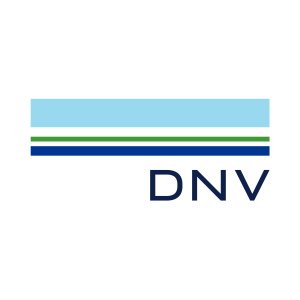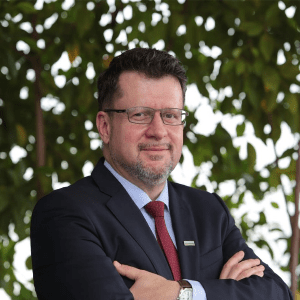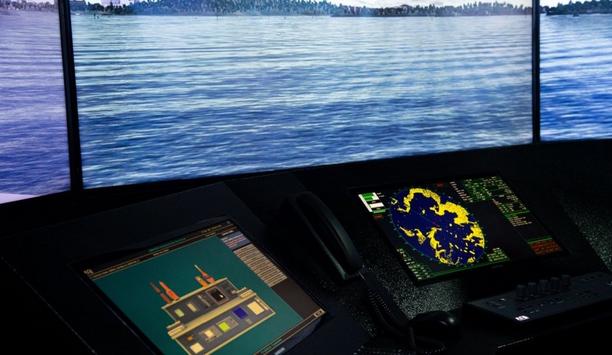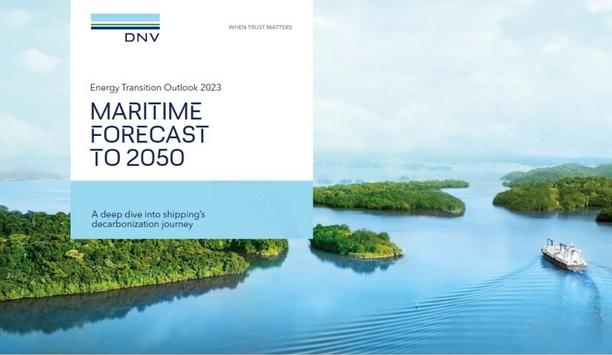DNV - Experts & Thought Leaders
Latest DNV news & announcements
This August marks the official launch of CFARER, a new brand formed from what was previously known as DNV Maritime Software. The move represents a significant shift in the ownership and operational structure of DNV’s fleet management software business. The new name CFARER is a clear commitment to the people who keep ships moving, offshore and onshore: the seafarers. CFARER now operates independently, with DNV retaining majority ownership and shipping company Wilhelmsen Port Services joining as a new strategic minority shareholder. Port clearance solution As part of this change, Wilhelmsen Port Services’ digital subsidiary Diize becomes part of the CFARER team. Its port clearance solution Always on Board will be integrated into the CFARER portfolio, alongside ShipManager, Navigator Port and Hull Manager. All products will continue to be supported and developed under the new brand, with no changes and no interruption for customers and the delivery of services. Structural shift “This is a structural shift, not just a rebrand. CFARER is now a standalone business with its own leadership, strategy, and commercial direction,” said Erik Staubo, CEO of CFARER. “By operating independently, CFARER can focus entirely on building better software, responding faster to user needs, and partnering more openly across the industry. Our goal is to ensure continuity for existing users while creating more room for innovation and growth.” Three distinct perspectives The new setup brings together three distinct perspectives, setting CFARER apart from other maritime SaaS companies: DNV, as the majority shareholder, provides continuity, governance, and maritime domain expertise. Wilhelmsen Port Services, through its unparalleled global network, leading operational expertise, and contribution of maritime software provider Diize, strengthens CFARER’s ability to deliver solutions grounded in the real-world operations of global shipping. Papillon, a maritime technology-focused operator-investor and company builder, leads the company’s operations and long-term growth strategy. Future ownership evolution CFARER’s leadership team will operate independently, with a mandate to scale the business globally CFARER’s leadership team will operate independently, with a mandate to scale the business globally. CFARER remains open to exploring new partnerships and future ownership evolution. The aim is clear: to become the digital pioneer in maritime software, shaped by deep industry collaboration. “We are proud to join forces with DNV and for the Diize team to become part of CFARER – a powerful step forward in our mission to drive smarter and safer operations, both at sea and in port,” Michael Satzger, Vice President, Strategy, M&A and Business Development at Wilhelmsen Port Services. “Together, we are committed to building solutions that serve the real needs of seafarers – placing them where they belong: at the heart of shipping.” Trusted solutions CFARER continues to deliver the trusted solutions fleets rely on every day CFARER continues to deliver the trusted solutions fleets rely on every day. Navigator Port and Always on Board by Diize are now united under the CFARER Port Clearance family. Ship Manager, used globally for technical Fleet Management, and Hull Manager, focused on inspection and hull integrity, remain leading digital solutions with strong innovations in the pipeline for 2025. During 2025, all products will be available in both Cloud and Classic versions, allowing crews to work with what fits best, wherever they are in the digital landscape. “The maritime software market is moving fast. CFARER’s new brand and structure give it the independence to innovate quickly, while customers continue to benefit from the trust and reliability built over decades,” Kenneth Vareide, CEO, Digital Solutions, at DNV, and Chairman of the Board of CFARER.
The third edition of The Maritime Standard Transportation and Climate Change Conference (TACCC) will bring together industry pioneers for an in-depth exploration of emerging technologies and innovations driving sustainable maritime mobility. Session 2, titled "Innovations & Technology for Decarbonized Mobility", will feature a diverse lineup of experts from across the global shipping, ports, and maritime technology sectors. The conference will take place on Thursday, 25th September 2025, at the Saadiyat Rotana Resort, Abu Dhabi, UAE. Insights This session will feature insights from Capt. Saif Al Mheiri, CEO of Abu Dhabi Maritime and Chief Sustainability Officer at AD Ports Group; Mr. Ali Shehab, Global Director of Special Projects and Services at DNV; Dr. Abdullah Sulaiman Al-Abri, Vice President of Sustainability at SOHAR Port and Freezone; Mr. Imran S. Inamdar, Chief Operating Officer at Drydocks World; Mr. Theo Xenakoudis, Chief Commercial Officer and Managing Director of the Piraeus Office at International Registries Inc.; Mr. Abdul Fahl, Director at TTMS (Gulf); Mr. Fadi Elamin, CEO and Founder of MySkies Aviation; Ms. Katherine Yakunchenkova, General Manager of Al Safina Security; Mr. Ramee Rashid, Director at Seamaster Maritime; Dr. Alejandro Ríos Galván, an independent sustainability consultant and former Chief Research Scientist at Khalifa University; and Mr. Kamran Ul Haq, Global Head and Senior Vice President for Ports Advisory at Lloyd’s Register. Critical themes The session will cover a range of themes critical to the future of maritime decarbonisation. Topics will include the integration of artificial intelligence and automation into sustainable transportation systems, with a focus on smart fleet management, real-time emissions tracking, and predictive analytics. Discussions will also address advances in electrification and the use of alternative fuels such as biofuels, hydrogen, and e-methanol.
DNV has awarded a General Approval for Ship Application (GASA) certificate to Mitsui O.S.K. Lines, Ltd., (MOL), MISC Berhad (MISC), PETRONAS CCS Ventures Sdn. Bhd. (PCCSV), and Shanghai Merchant Ship Design and Research Institute (SDARI), for their jointly developed 62,000 cubic metres (cbm) liquid carbon dioxide (LCO2) carrier design. This milestone builds upon an Approval in Principle (AiP) awarded by DNV in 2023 and highlights the growing role of Carbon Capture and Storage (CCS) in Asia’s decarbonisation efforts. Several innovative features A key part of the design is the cargo containment system, which utilises advanced materials The vessel design includes several innovative features designed to enhance the long-haul transport of LCO2. A key part of the design is the cargo containment system, which utilises advanced materials for greater safety and efficiency, and also includes a reliquefaction system for pressure and temperature regulation. Additional elements of the design include: an energy-saving propulsion system, optimised hull design, and LNG as fuel to boost fuel economy and environmental performance. Low-carbon future CCS is gaining momentum as a promising solution to help countries transition to a low-carbon future across Asia Pacific. Several countries, including Malaysia, Australia, Japan, and Singapore, are investing in the development of infrastructure, launching projects, and forging cross-border partnerships to accelerate CCS deployment. GASA certification Daisuke Fujihashi, General Manager, Carbon Solutions Business Development Unit, Mitsui O.S.K. Lines, Ltd., said: “The LCO₂ carrier is an indispensable component in building a cross-border CCS value chain across the Asia-Pacific region.” “This GASA certification awarded by DNV not only demonstrates the feasibility of safe and efficient CO2 transport but also marks a significant step forward in the transition toward a decarbonised society, backed by internationally recognised design credibility.” “At Mitsui O.S.K. Lines, Ltd., we regard the LCO₂ carrier not merely as a means of transportation, but as a vital ‘artery' for the social implementation of CCS. Moving forward, we will continue to work closely with our partner companies to contribute to the development of sustainable maritime transport infrastructure that supports global decarbonisation efforts.” LCO₂ carriers Zahid Osman, President and Group CEO of MISC, said: “As a critical enabler, LCO₂ carriers help address one of the biggest gaps in the CCS value chain, particularly when emitters lack access to nearby sequestration sites.” “By ensuring safe and efficient maritime transport and storage of CO₂, we play our part in managing societal emissions in a practical and scalable way. This aligns seamlessly with MISC’s long-term #deliveringProgress strategy, focusing on providing safe, efficient and reliable maritime solutions that meet the world’s evolving needs.” “We firmly believe that meaningful partnerships are key to turning shared ambitions into reality, and we thank DNV for this recognition as we work together towards a more sustainable future.” Scalable LCO₂ carrier design Nor A’in Md Salleh, CEO of PETRONAS CCS Solutions, a wholly owned subsidiary of PCCSV, said on behalf of PCCSV: “Developing a scalable LCO₂ carrier design is essential to realising the offering of cross-border CCS as a solution to the hard-to-abate industries in the region.” “This certification reflects our commitment to safe, efficient carbon transport aligned with broader decarbonisation goals. DNV’s rigorous review and validation of the design have been instrumental in strengthening stakeholder confidence and accelerating progress toward a robust CCS value chain.” CCS value chain Antony M Dsouza, Senior Vice President & Regional Manager, Southeast Asia, Pacific & India, Maritime at DNV, said: “LCO2 carriers are a vital link in the emerging CCS value chain, enabling the safe and efficient transport of captured carbon across borders.” “With storage and capture capacity expected to quadruple by 2030, scalable and reliable ship designs will be key to unlocking this growth. Through this collaboration, we are proud to bring together DNV’s technical expertise and our partners’ innovative drive to support the development of a robust carbon transport infrastructure for the region.”
Insights & Opinions from thought leaders at DNV
More than almost any trend, decarbonisation is driving the future of maritime. That reality alone makes decarbonisation the perfect topic for our first-ever Expert Panel Roundtable column. Traditional maritime fuels, like heavy fuel oil, release harmful pollutants that contribute to air pollution and have adverse health effects. We have to do better, and discussions in the maritime industry centre on which combination of alternative fuels and other technologies can solve the shorter- and longer-term challenges of decarbonisation. For an update on the various approaches, we asked our Expert Panel Roundtable: What are the latest maritime technology trends in decarbonisation?
The maritime industry is taking important steps to improve cybersecurity, catching up rapidly by introducing other industries' best practices into information technology (IT) and operational technology (OT) onboard vessels. Work remains to be done to ensure a cyber-resilient worldwide fleet of maritime operations. The way forward is through collaboration among all major stakeholders. Remote-controlled and autonomous ships In the future, the marine industry will increasingly use remote-controlled and autonomous ships and infrastructure. One can imagine multi-ship, multi-infrastructure hybrid scenarios where a software failure or a cyber-attack could result in widespread damage. “Protecting this advanced marine industry will drive the need for even higher levels of cybersecurity, reliability, and robustness of marine automation systems and software,” says Svante Einarsson, Head of Maritime Cyber Security Advisory, DNV Cyber. Cybersecurity insights CyberOwl complements DNV Cyber with advanced analytics and threat management for maritime vessels Einarsson shares additional insights into cybersecurity for the maritime industry in our recent interview. DNV expanded its cybersecurity capabilities by acquiring Applied Risk in 2021 and Nixu in 2023, forming DNV Cyber with over 500 experts. This merger enhances maritime cybersecurity by integrating IT and industrial control system security services, offering comprehensive solutions from risk assessment to incident response. CyberOwl complements DNV Cyber with advanced analytics and threat management for maritime vessels, ensuring real-time threat monitoring and support to sustain regulatory compliance. Maritimeinformed.com: What are the cybersecurity vulnerabilities in the maritime market? What are the possible consequences and/or worst-case scenarios? Einarsson: The maritime industry faces several cybersecurity vulnerabilities, including the integration of IT and OT systems, unsecured Internet of Things (IoT) devices, outdated software, weak authentication, and human factors like phishing. The consequences of breaches can be severe, such as operational disruption, data theft, ransomware attacks, cyber-physical attacks, and supply chain disruption. A worst-case scenario includes hybrid incidents that compromise both IT and OT systems at the same time within highly trafficked areas (such as a port). Depending on the available time and alternative means, the vessel might run aground resulting in major oil spills, environmental disasters, and/or significant loss of life. These vulnerabilities and potential impacts highlight the critical need for robust cybersecurity measures in the maritime sector. Maritimeinformed.com: What is the role of regulations when it comes to cybersecurity in the maritime market, including IMO, IACS, and critical infrastructure regulations? How do regulations drive better cybersecurity practices? The EU’s NIS2 directive enforces robust cybersecurity strategies and incident reporting Einarsson: Regulations play a crucial role in maritime cybersecurity by setting global standards and ensuring compliance. The International Maritime Organisation (IMO) mandates cyber risk management in Safety Management Systems, while the International Association of Classification Societies (IACS) requires cybersecurity integration in systems and ships throughout the lifecycle of a vessel for new builds contracted after July 1, 2024. The EU’s NIS2 directive enforces robust cybersecurity strategies and incident reporting. These regulations drive better practices by standardising frameworks, holding organisations accountable, promoting holistic risk management, enhancing transparency, and fostering continuous improvement. This comprehensive regulatory approach forces all stakeholders in the industry (yards, vendors, and ship managers) to act and work together to implement effective cyber resilience. Maritimeinformed.com: How does greater awareness boost cybersecurity? What is the role of near misses in driving cyber awareness and investments? Einarsson: Greater awareness boosts cybersecurity by educating individuals and organisations about potential threats, leading to better prevention and response strategies. It fosters a culture of vigilance, reducing the likelihood of successful attacks. Near misses play a crucial role by highlighting vulnerabilities and demonstrating the potential impact of cyber threats without causing actual harm. These incidents drive investments in cybersecurity by showcasing the need for robust defences, and well-planned responses, and encouraging proactive measures to prevent future breaches. Maritimeinformed.com: What are the pitfalls of over-confidence and under-preparation when it comes to cybersecurity? Einarsson: Overconfidence in cybersecurity can lead to complacency, ignoring potential threats, and underestimating attackers. For example, relying on boundary protection only, and believing that a system is impenetrable might result in neglecting regular updates and patches, leaving it vulnerable to exploits. Under-preparation, on the other hand, means inadequate de fences, response plans, and drills. An example is the 2017 Equifax breach, where failure to patch a known vulnerability led to the exposure of sensitive data of 147 million people. Both pitfalls can result in significant financial and reputational damage. Maritimeinformed.com: What is the role of technology advancements in driving the need and awareness of cybersecurity (e.g., the impact of digitisation, decarbonisation, automation, etc.)? Digitisation and automation support decarbonisation also increase the need for cybersecurity Einarsson: Decarbonisation is one of the key shaping factors in maritime today. Technology advancements like digitisation and automation support decarbonisation but also increase the need for cybersecurity by expanding the attack surface and introducing new vulnerabilities. As industries adopt remote maintenance, IoT, artificial intelligence (AI), and other technologies, the complexity and connectivity of systems grow, making them more susceptible to cyber threats. An example is how scrubber systems with modern technologies such as remote connectivity are retrofitted onboard older vessels today, creating a new and potentially unmanaged gateway to the control systems onboard the vessel. In other words, cybersecurity enables digitisation and decarbonisation. Maritimeinformed.com: What is the labor situation when it comes to the skillsets needed for cybersecurity excellence? Is there a shortage of expertise and how can it be addressed? Einarsson: The cybersecurity industry faces a significant skills shortage, with a very large number of positions unfilled globally. This gap is driven by the rapid evolution of cyber threats and the increasing complexity of digital environments. To address this, organisations should adopt skills-based hiring, offer continuous training and upskilling, and create clear career paths. Attracting diverse talent and collaborating with educational institutions can also help bridge the gap. Emphasising both technical and soft skills is crucial for developing a robust cybersecurity workforce. Many times the best option is to combine different competencies of several people into an aligned team, such as superintendents with OT system and operation expertise with cybersecurity and IT fleet experts. Maritimeinformed.com: What is the emerging role of AI in cybersecurity, such as the ability to anticipate attacks before they happen? AI-driven tools can predict and anticipate attacks by recognising early warning signs, allowing teams to address vulnerabilities Einarsson: AI can significantly enhance cybersecurity teams' effectiveness by providing advanced threat detection and predictive analytics. Machine learning algorithms analyse vast amounts of data to identify patterns and anomalies that may indicate potential cyber threats. AI-driven tools can predict and anticipate attacks by recognising early warning signs, allowing teams to address vulnerabilities proactively. Additionally, AI automates routine tasks, freeing up human experts to focus on more complex issues. Human teams can assess AI-generated results, ensuring accuracy and context, and make informed decisions. Real-time threat intelligence and automated response systems ensure quicker mitigation of incidents, ultimately strengthening the overall security posture and reducing the likelihood of successful cyber-attacks. Maritimeinformed.com: What is the impact of geopolitics on cybersecurity? How does the geo-political situation contribute to risks? Einarsson: Geopolitics significantly impacts cybersecurity by increasing the frequency and severity of cyber-attacks. Conflicts like the Russia-Ukraine war have led to coordinated cyber and hybrid offensives, targeting critical infrastructure globally. Geopolitical tensions contribute to risks by creating an environment where state and non-state actors exploit vulnerabilities and accessible assets for espionage, sabotage, and disinformation. The most obvious related threat in the maritime domain is GPS and AIS spoofing which is very common in military active areas. Incidents have already happened where the untrained crew has had their ship impounded after being misled into foreign state waters.
We are in the midst of a decisive decade when it comes to the future of maritime. Facing a long-term goal of achieving net-zero emissions by 2050, the industry needs to make more informed and science-based decisions, and a new level of collaboration and flexibility will be needed among all maritime stakeholders. DNV’s Maritime Forecast to 2050 report provides a deep dive into shipping’s decarbonisation journey. Energy Transition Outlook 2023 The Energy Transition Outlook 2023 is the latest industry report focusing on the future of shipping and the uncertain route to getting there. DNV is the world’s pioneering classification society and a recognised advisor for the maritime industry. Between 2030 and 2050, technologies will have to be implemented along the path to net zero In the near term, between now and 2030, reducing energy consumption will go a long way toward meeting the required carbon reductions, according to the report. However, in the longer term, between 2030 and 2050, newer technologies will have to be implemented along the path to net zero. New pilot programmes "We try to have an overview of what's important and stay abreast of what is being discussed in the industry," says Eirik Ovrum, Principal Consultant, DNV Environment Advisory and lead author of the report. "This year, we focused on discussing technologies we haven't focused on before. We have to consider all of them." New pilot programmes including on-board carbon capture and nuclear propulsion will provide insight into how workable these strategies are on a larger scale and in a longer timeframe. Technological commercialisation A lot of technology will have to be developed, demonstrated, and commercialised over the next decade" "In this decade, we will have to develop new technologies and demonstrate performance, and then after that, we need to use those technologies on a larger scale,” says Ovrum. “Technological commercialisation is uncertain until we show we can make it work. But it is necessary. A lot of technology will have to be developed, demonstrated, and commercialised over the next decade." Decarbonisation focus for 2030 The near-term decarbonisation focus for 2030 is to reduce carbon emissions by 20%, which is “ambitious, bordering on the unrealistic,” says Knut Orbeck-Nilssen, DNV’s CEO, Maritime. “The outlook is challenging, but I remain an optimist,” he says. “Shipping has managed great challenges before. We need collaboration both within shipping and across sectors with those who produce and distribute the energy. Public and private partnerships can make a good contribution.” Use of alternative fuels Achievements toward the goal include a rapid growth in ships that can use alternative fuels “The clock is ticking louder on efforts to identify, define, and resolve barriers to successful and safe decarbonisation,” says Orbeck-Nilssen. Achievements toward the goal include a rapid growth in ships that can use alternative fuels, such as methanol and LNG (liquified natural gas). Carbon-neutral fuels In the long term, a range of technologies will be necessary, beyond the use of alternative fuels. The shipping industry will compete for the availability of carbon-neutral fuels with aviation, road transportation, and other industries. The shipping market will require an estimated 30-40% of the cross-sector carbon-neutral fuel supply in 2030. Carbon capture and storage The technology captures the carbon in the fuel before CO2 is emitted to the atmosphere through the exhaust Onboard carbon capture and storage can reduce the demand for carbon-neutral fuels and avoid broader market competition for sustainable biomass and renewable electricity. The technology captures the carbon in the fuel before CO2 is emitted to the atmosphere through the exhaust, thus allowing for continued use of carbon-rich fossil energy (but with significantly reduced CO2 emissions). Nuclear-powered ships Nuclear-powered ships are another approach, which is a proven technology used in navies and icebreakers. The technology would also reduce the competition for biomass and renewable electricity, but barriers exist to the application of nuclear power to merchant vessels. Pilot studies are planned for the early 2030s to assess the long-term feasibility of nuclear-powered ships. According to the DNV 2023 report, nuclear propulsion can be a competitive option if reactor costs are in the lower range of historical costs for land-based nuclear power plants. Accelerating the green shipping corridors Green shipping corridors can accelerate the use of carbon-neutral fuels by allowing barriers to be identified The continuing development of “green shipping corridors” will facilitate the application of decarbonisation strategies throughout the maritime value chain. A “green corridor” is a shipping route on which zero-carbon emissions ships and other emission reduction programmes are deployed, enabled by public and private actions and policies. Green shipping corridors can accelerate the use of carbon-neutral fuels by allowing barriers to be identified and overcome in a more targeted and practical way, rather than on a global scale. Wind-assisted propulsion and air lubrication systems Technologies such as wind-assisted propulsion and air lubrication systems can also play a role in the decarbonisation effort. Air lubrication reduces the resistance between a ship and the sea around its hull, thus lowering energy consumption. Other factors include digital tools, and fleet deployment and optimisation. “The 2020s is proving to be the decisive decade for decarbonisation of shipping,” says Ovrum. Decisions and strategies developed in the next few years will be decisive in meeting the 2030 and 2050 decarbonisation goals. Ways to overcome challenges To meet the challenges, Ovum says shipowners should: Reduce energy consumption now; Consider all decarbonisation options; Focus on fuel flexibility; and Consider long-term fuel strategies.












































